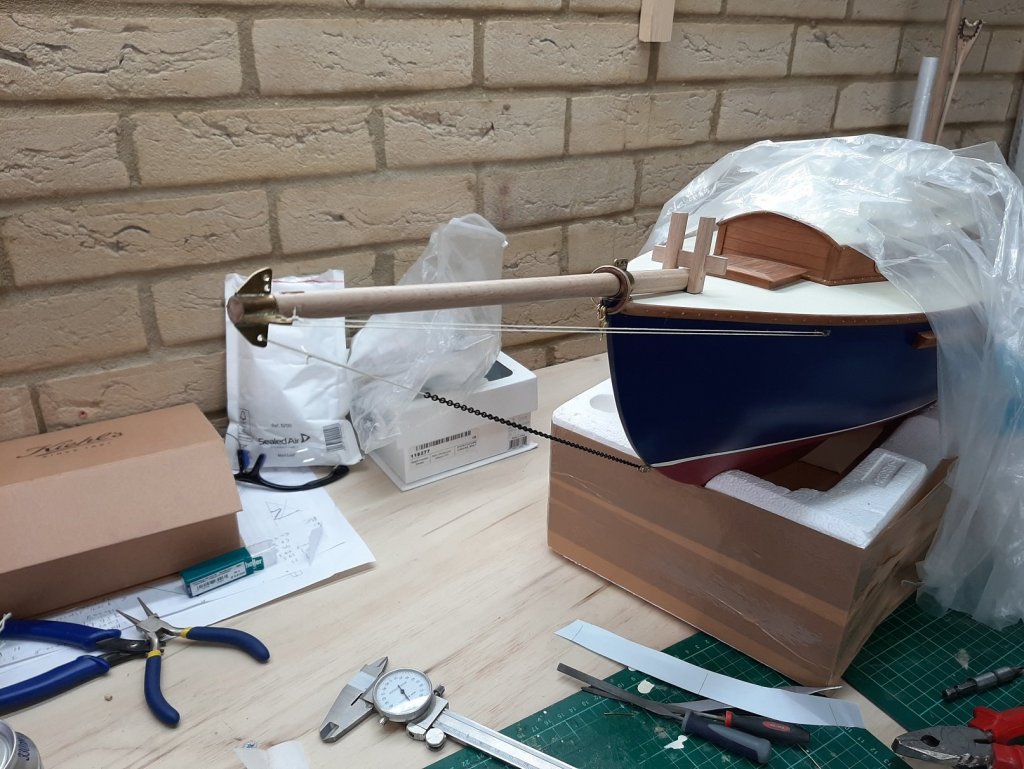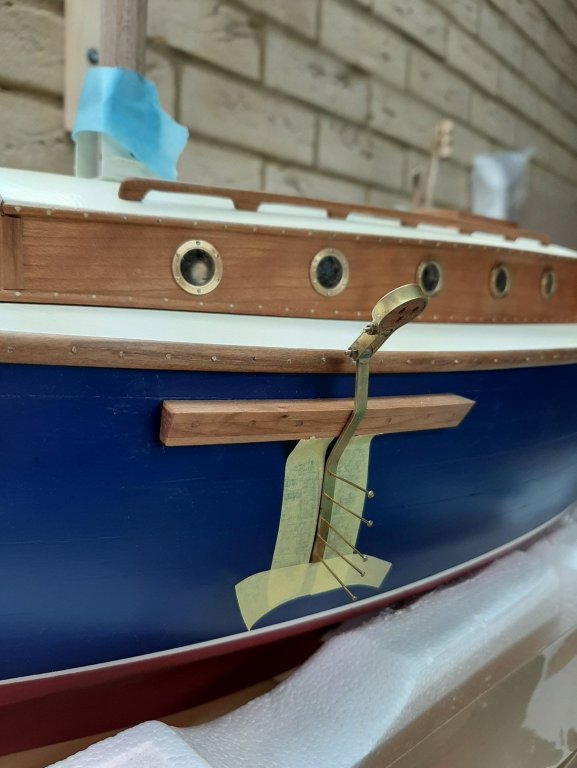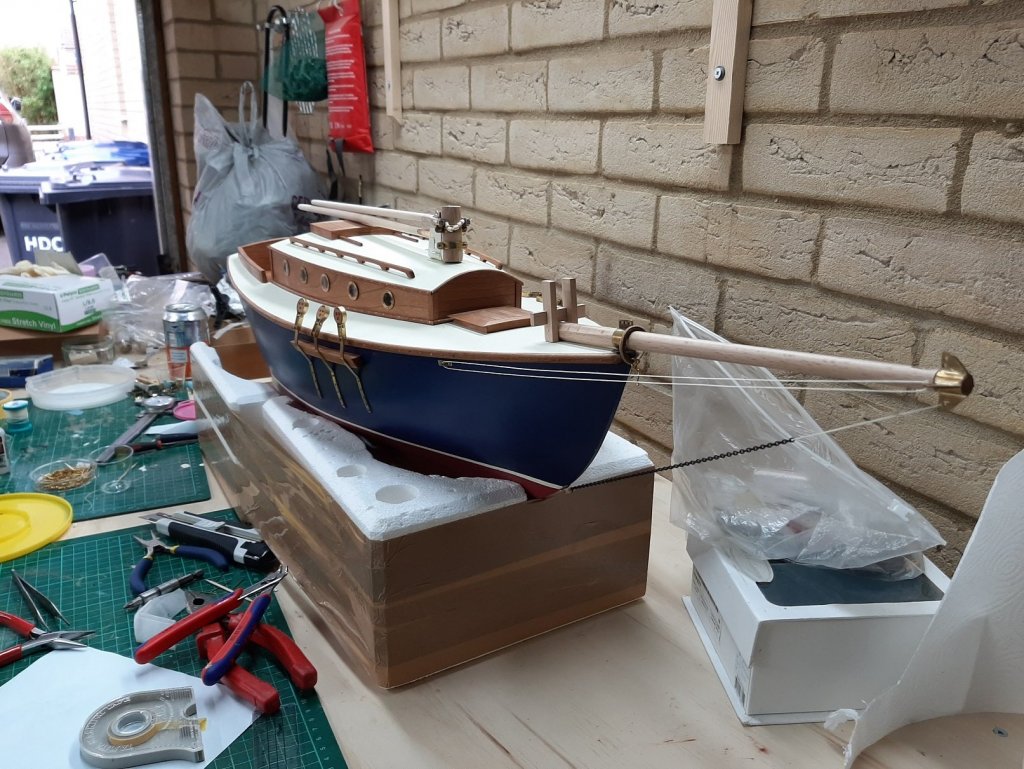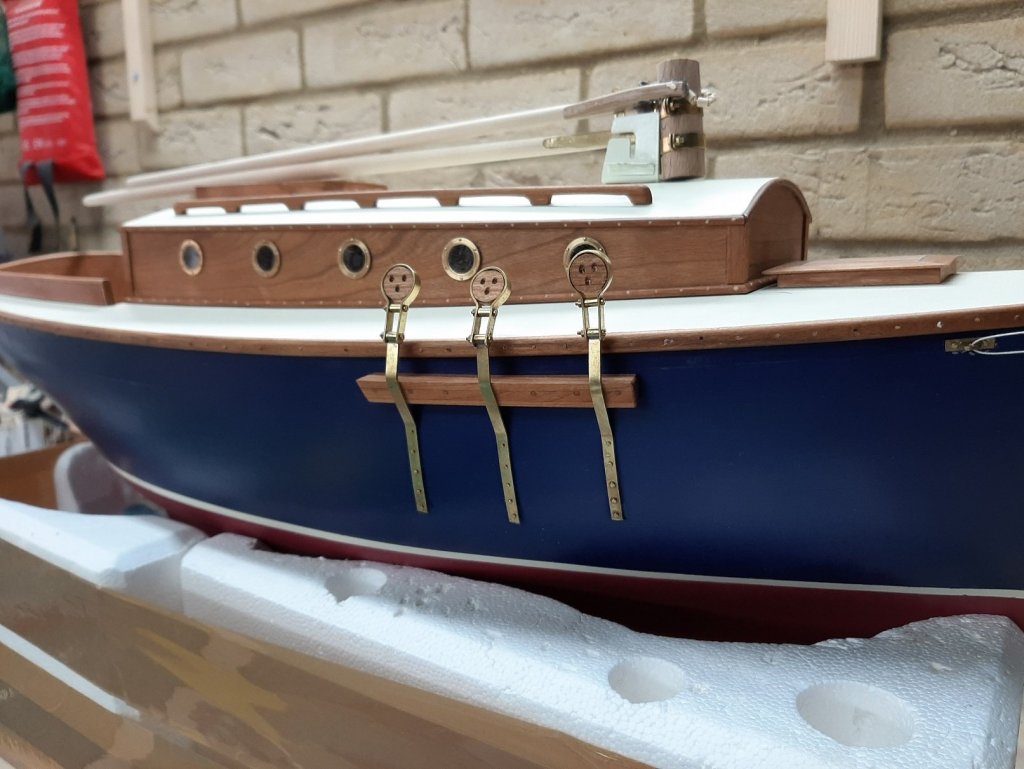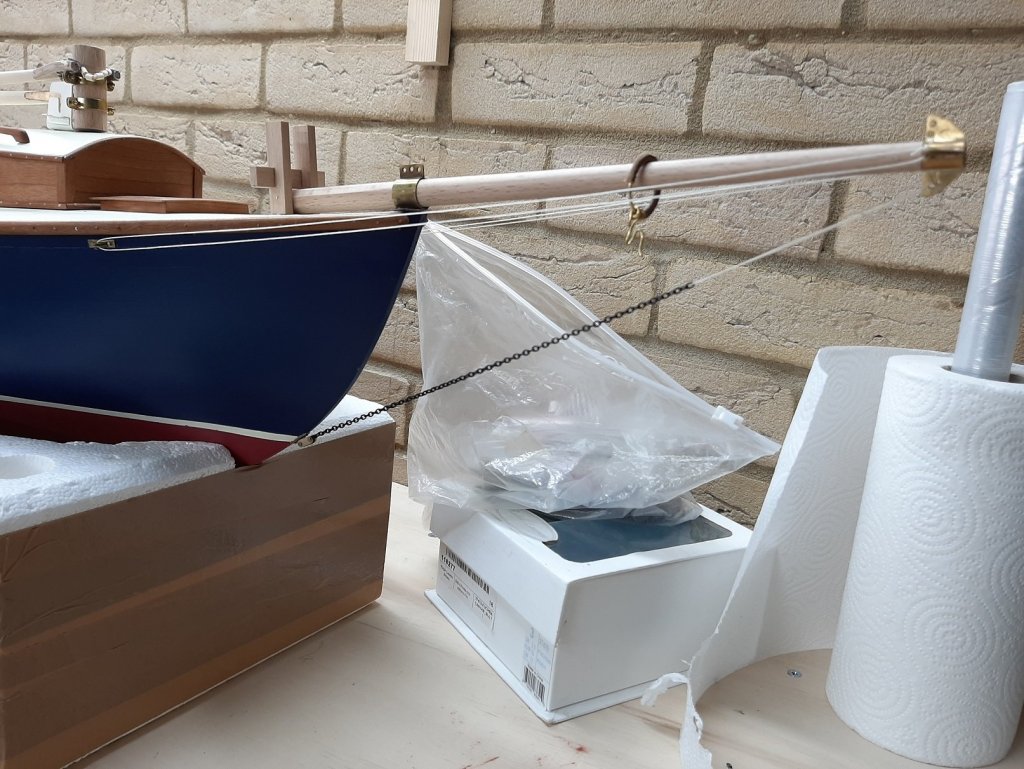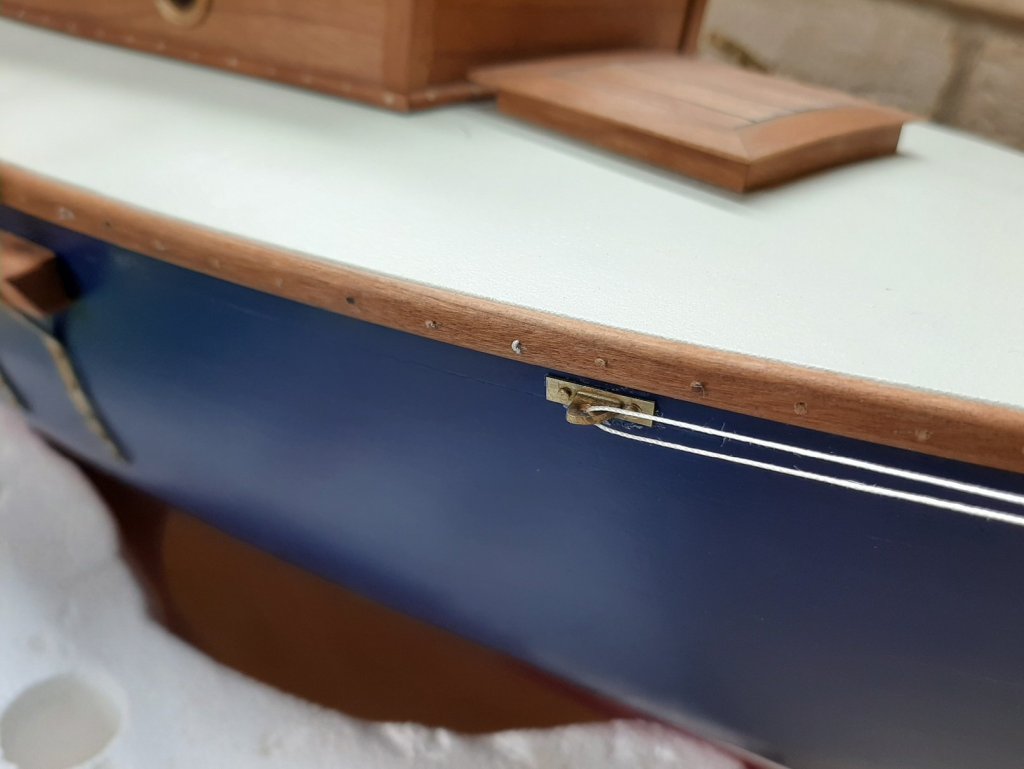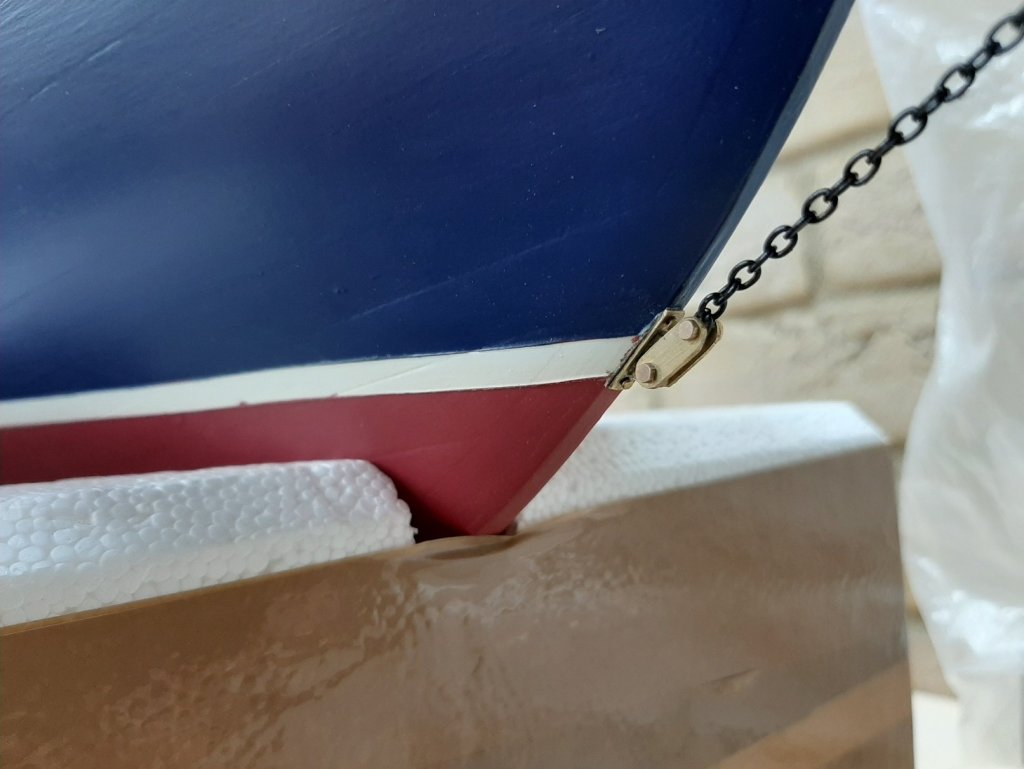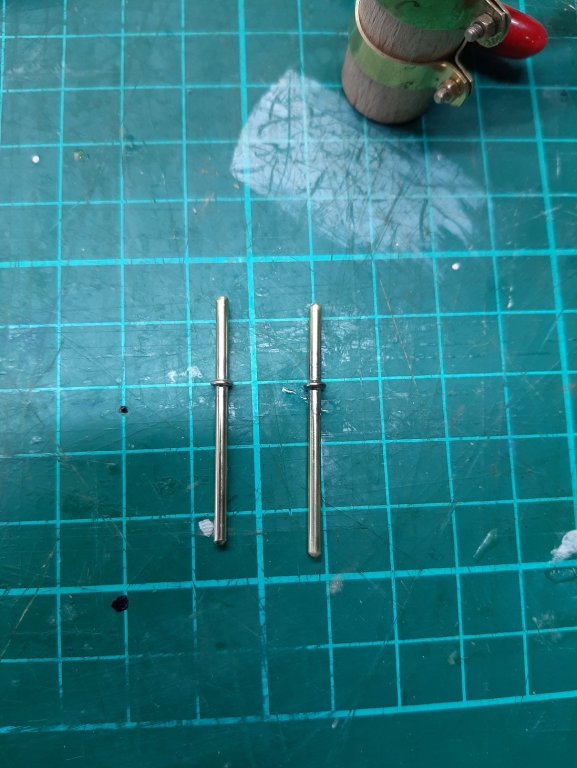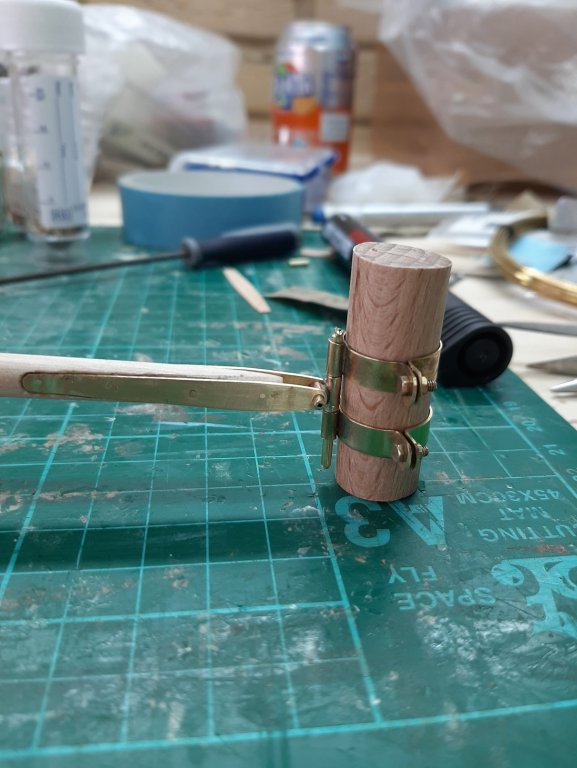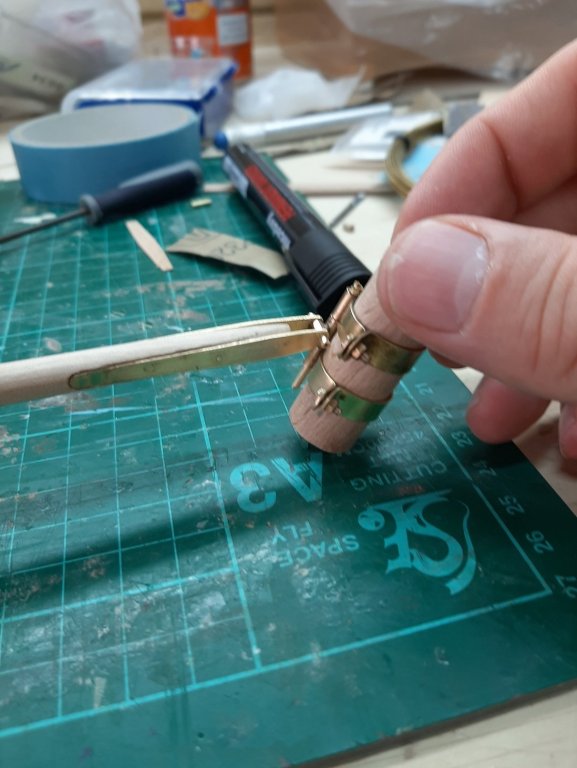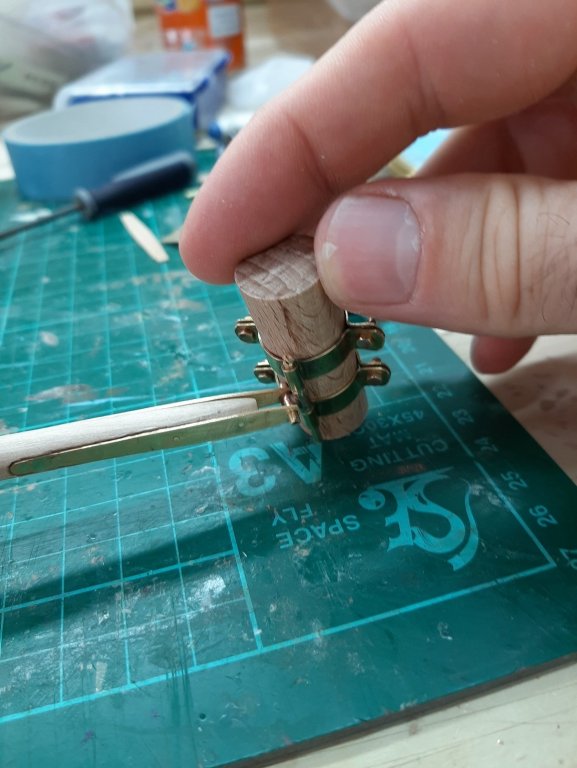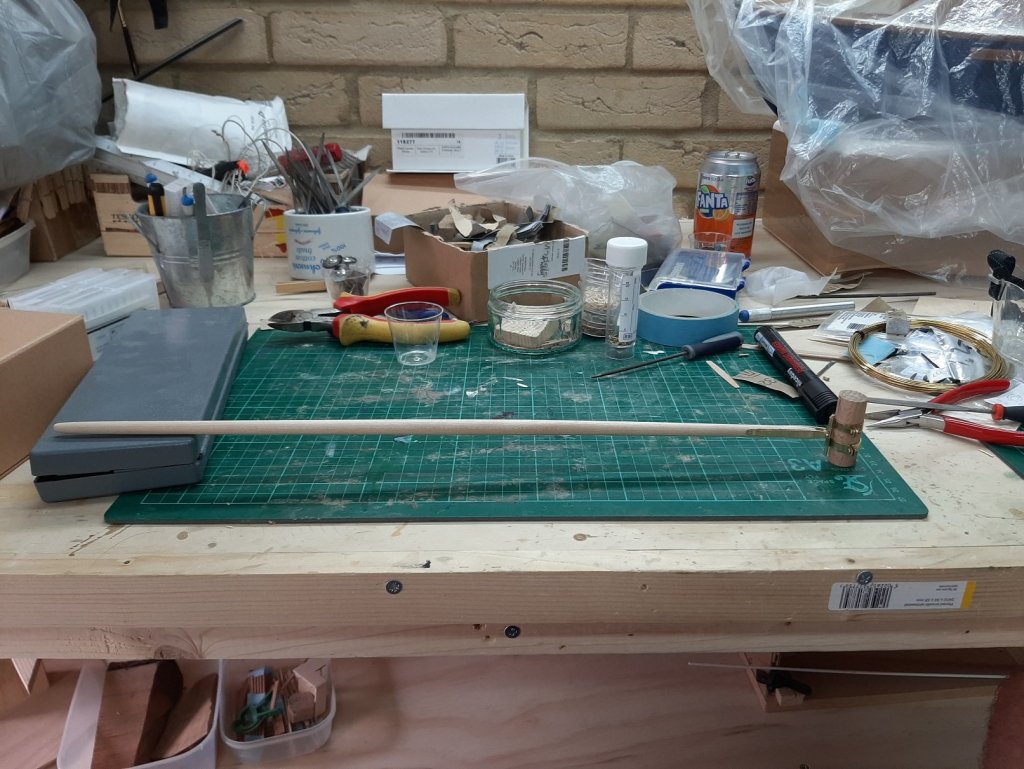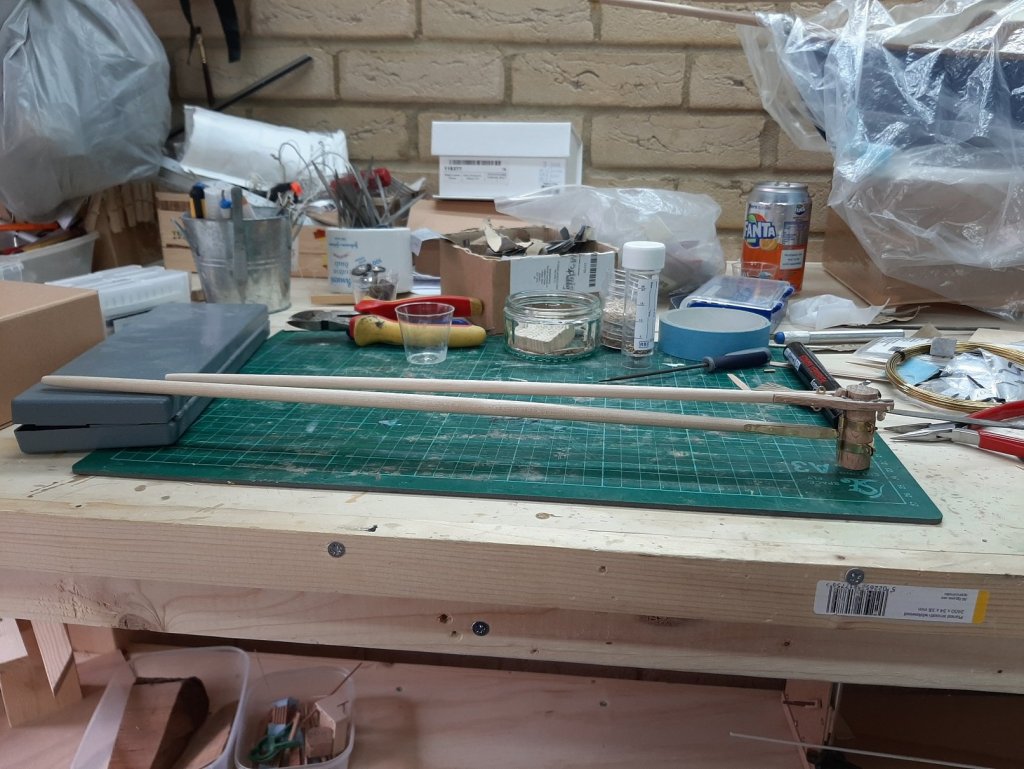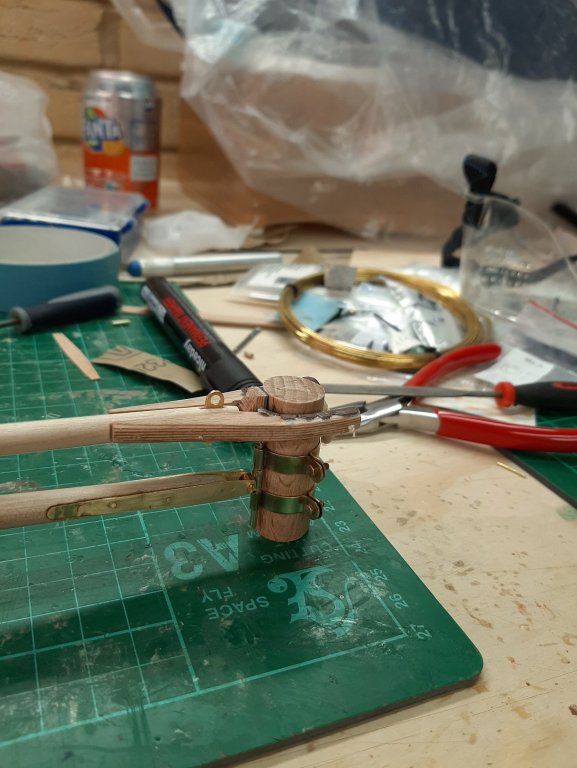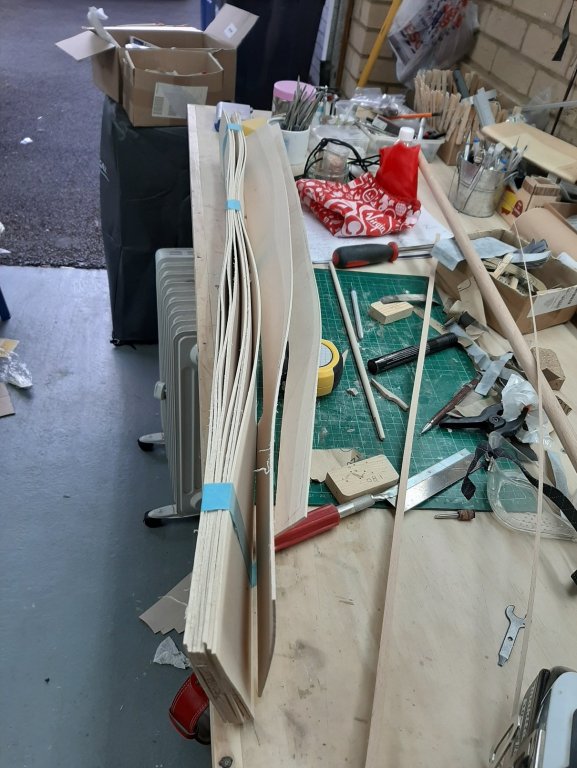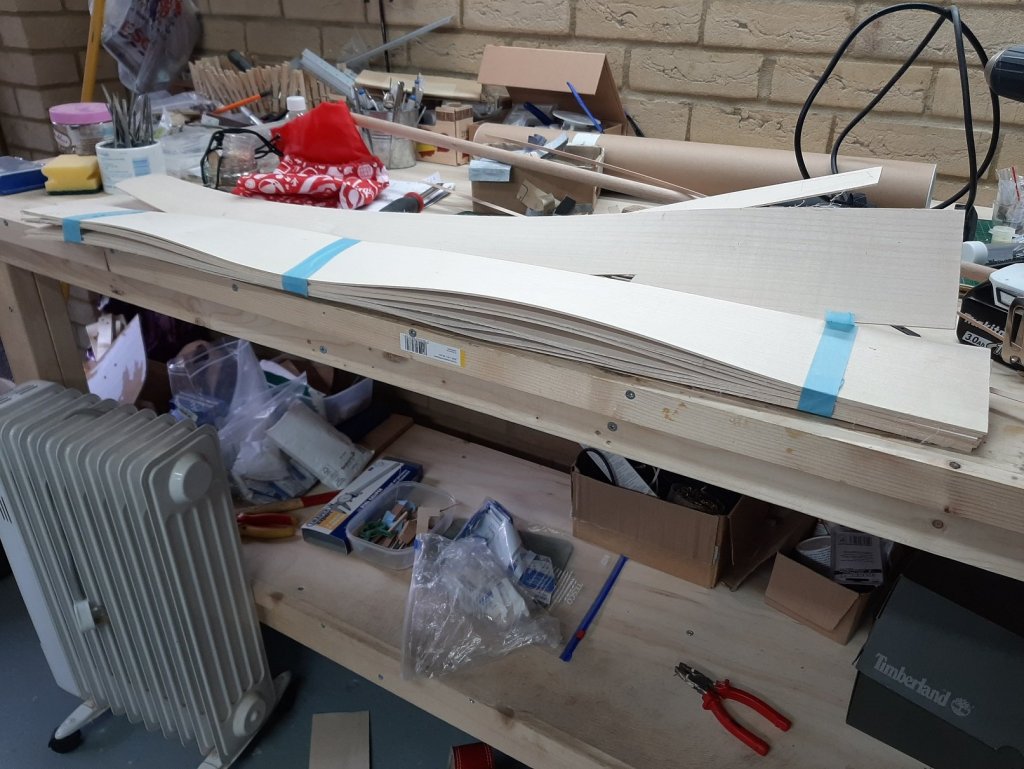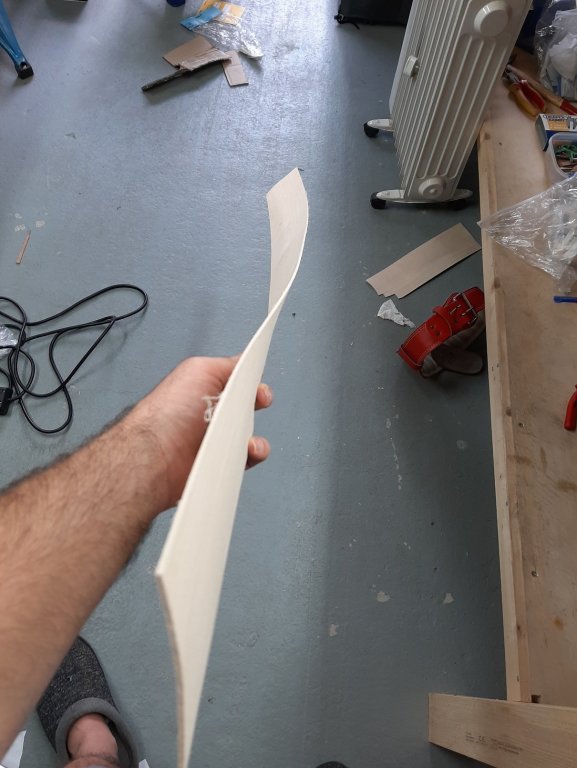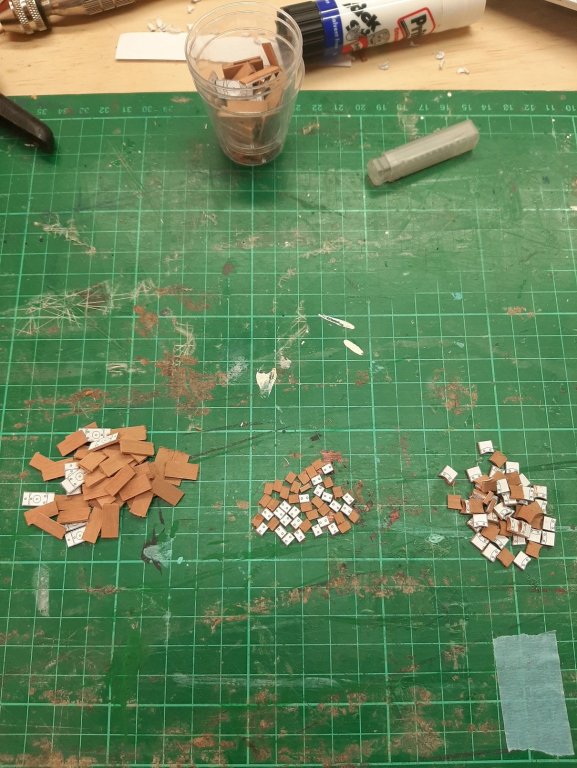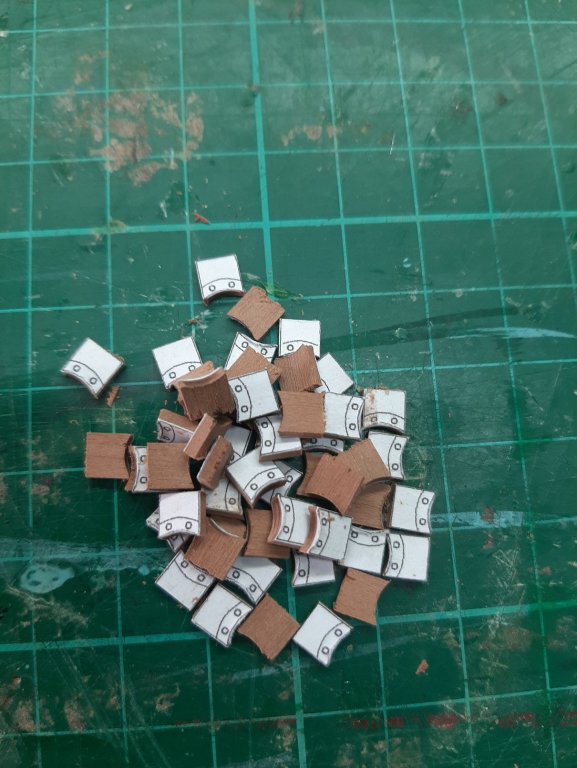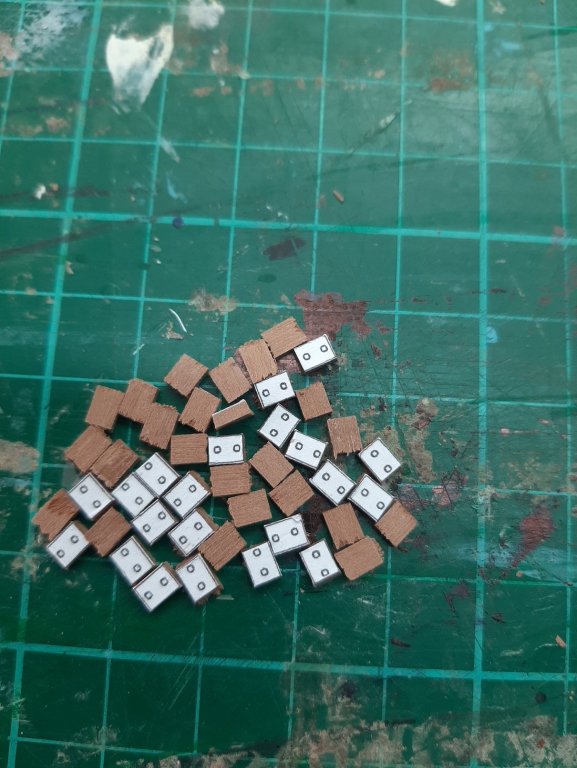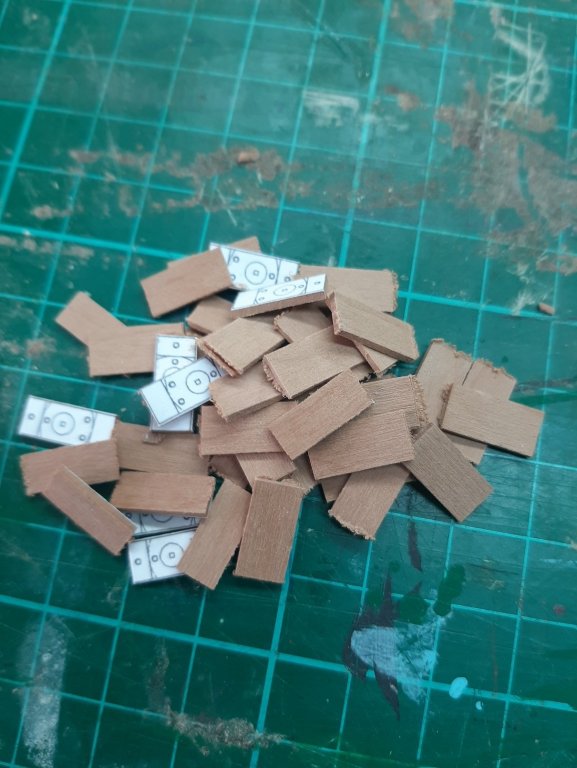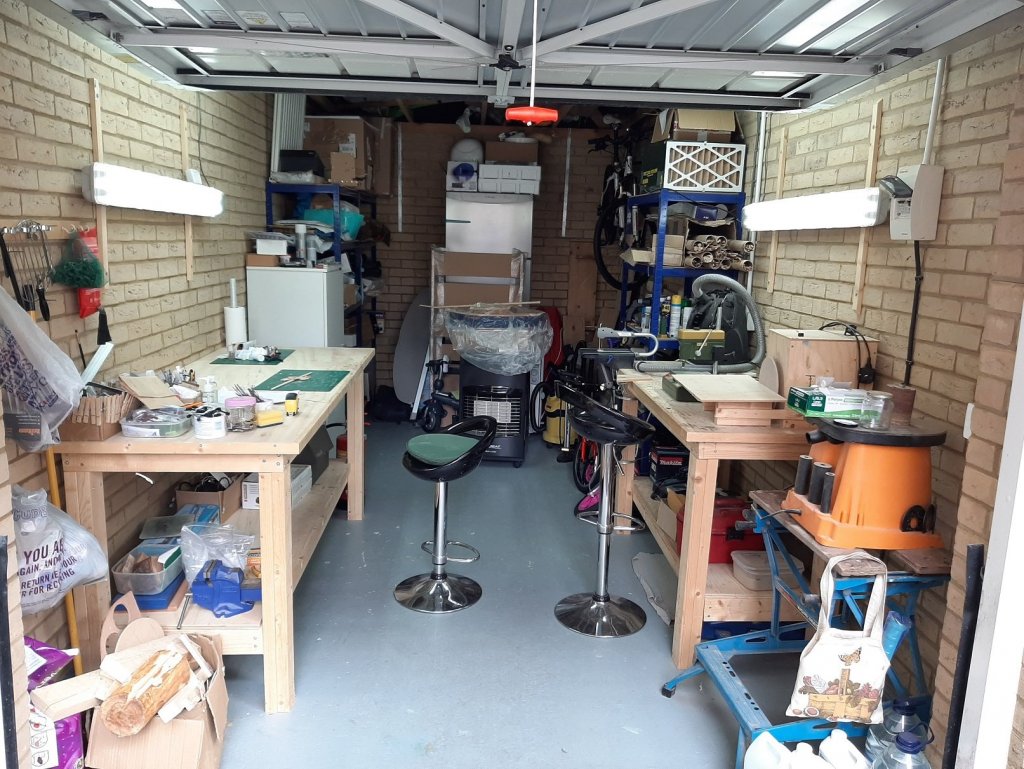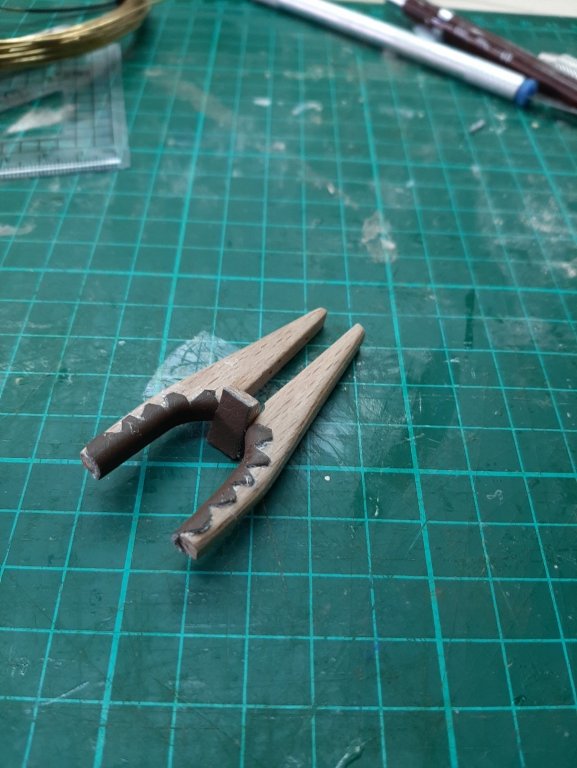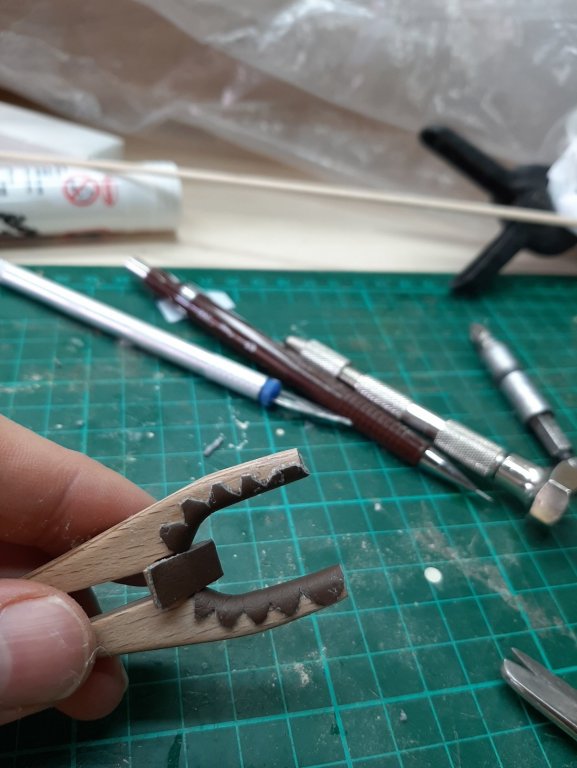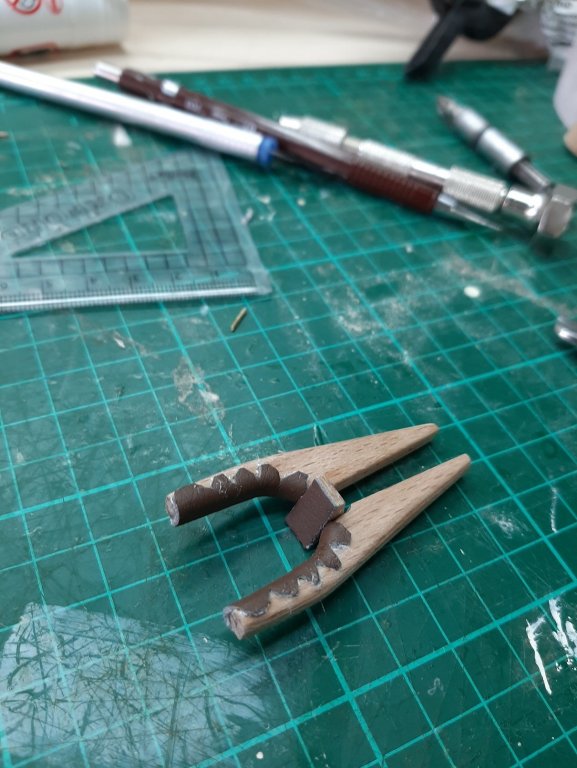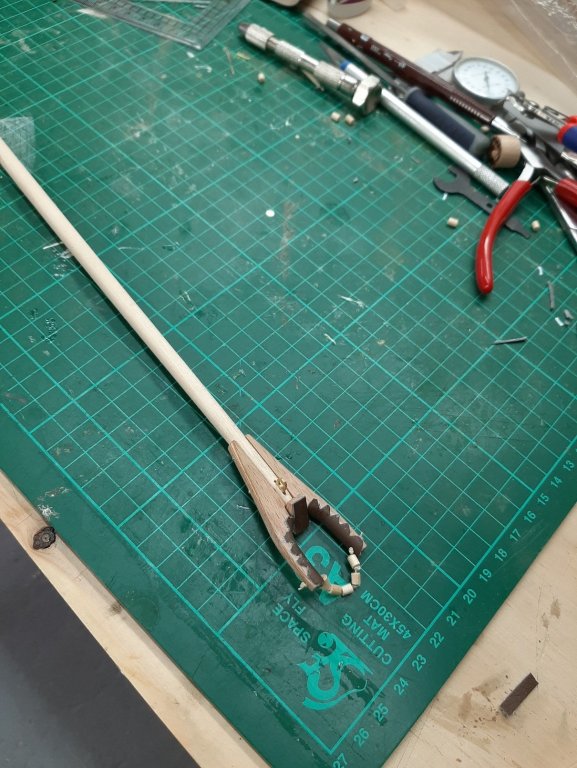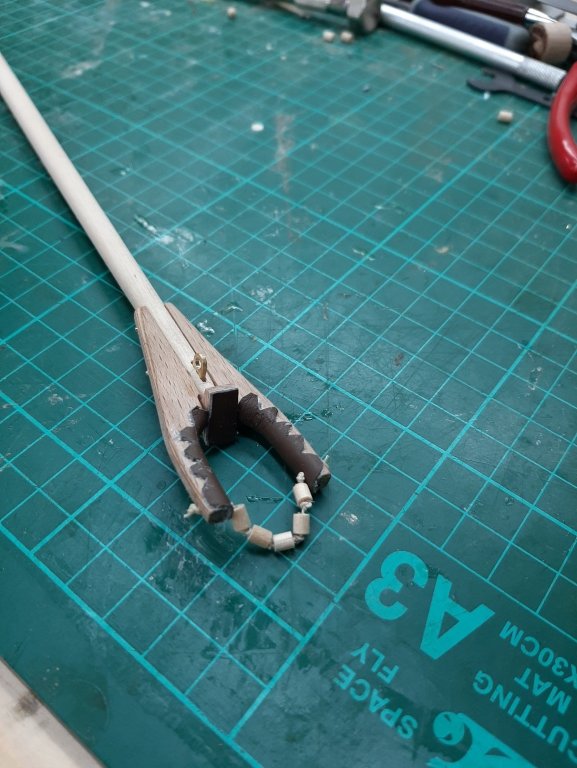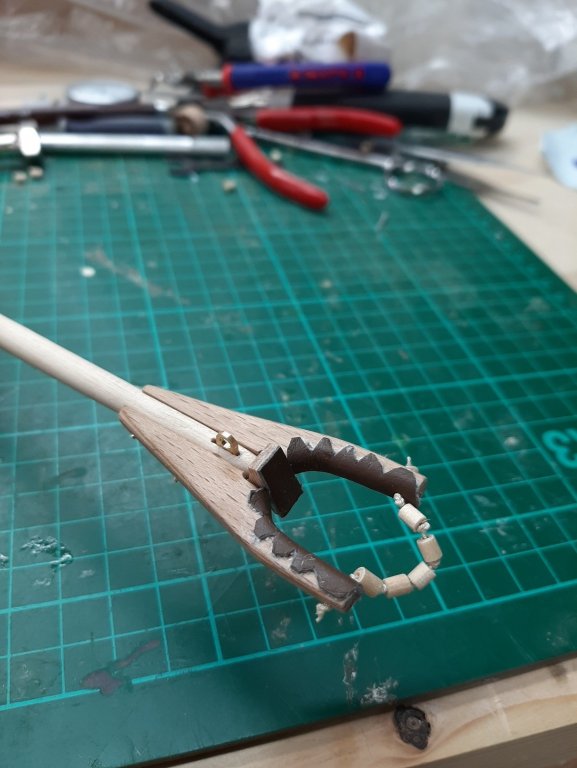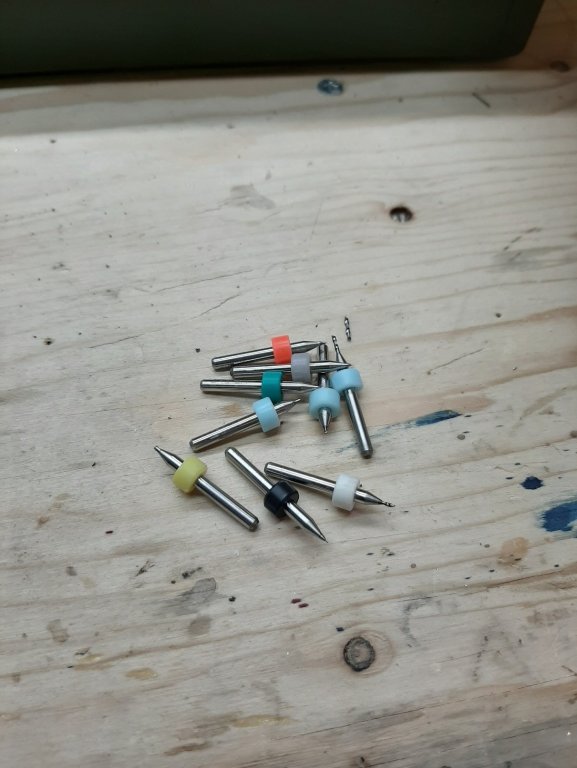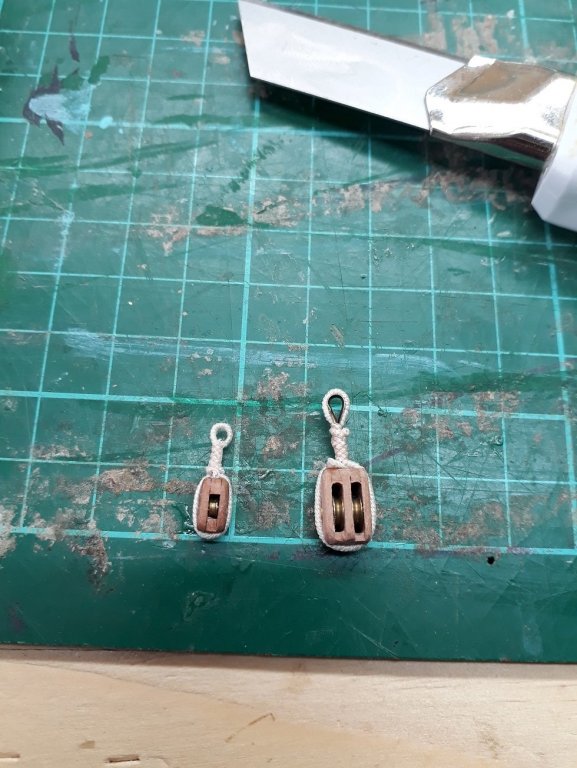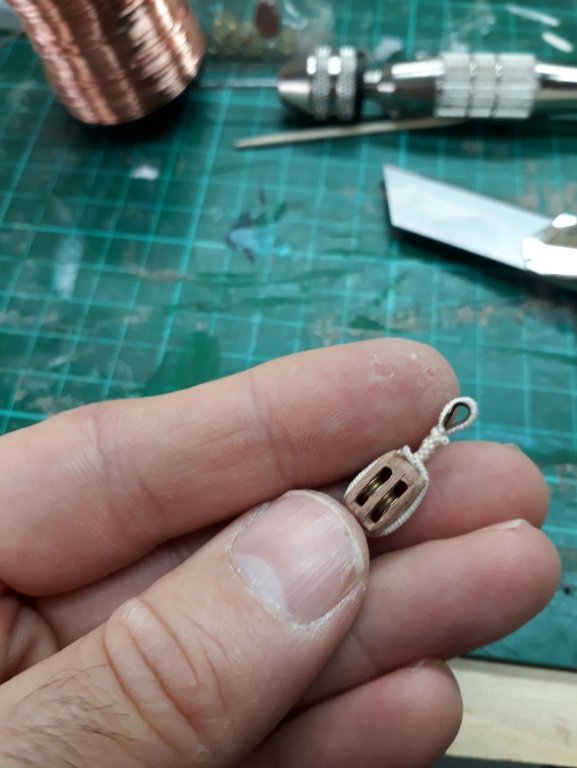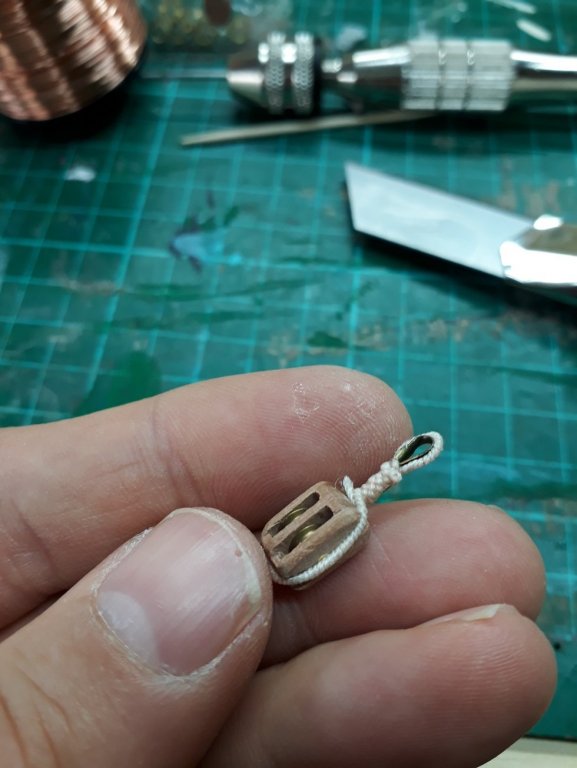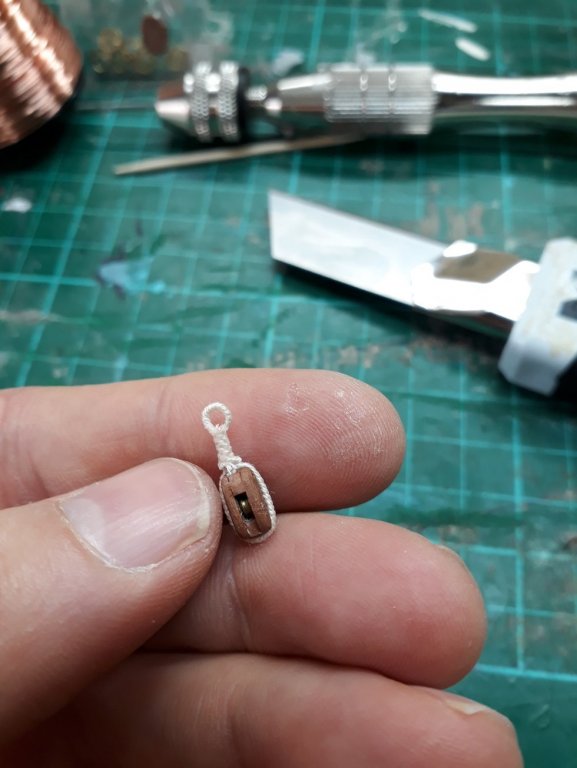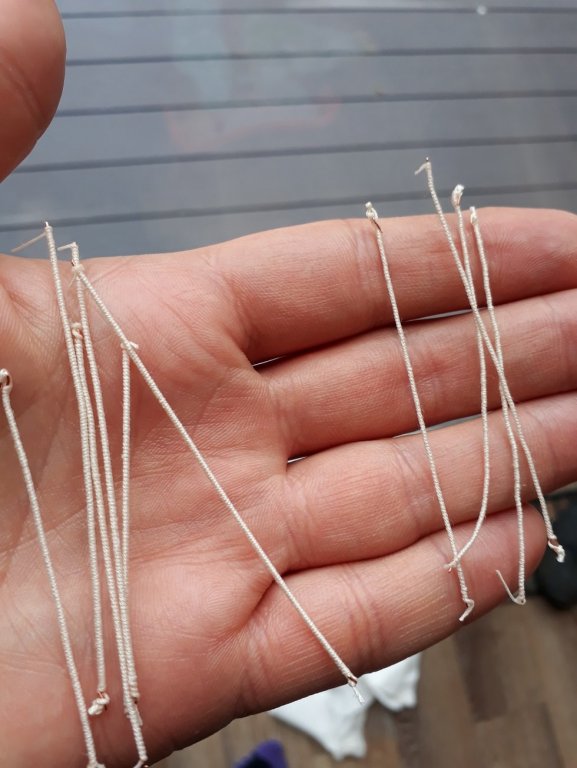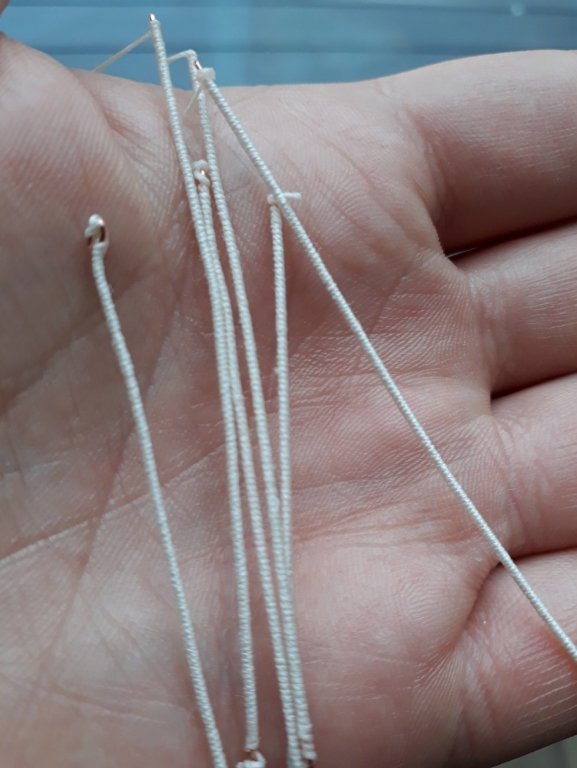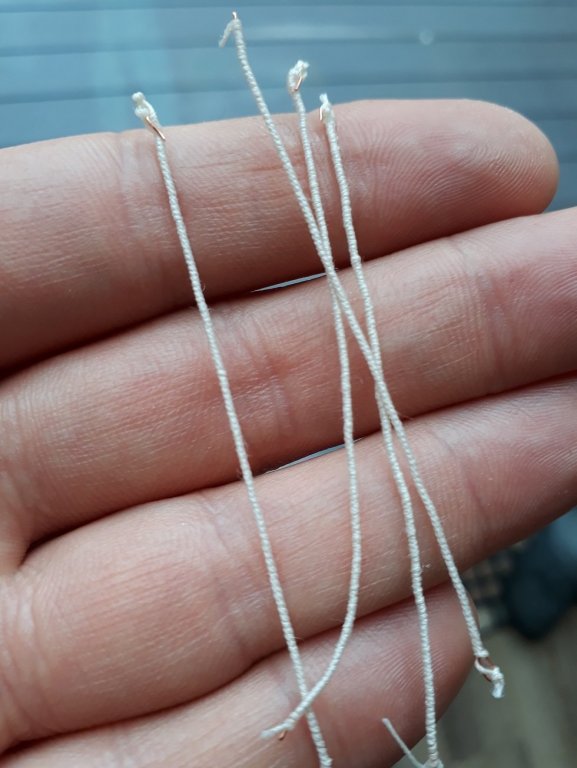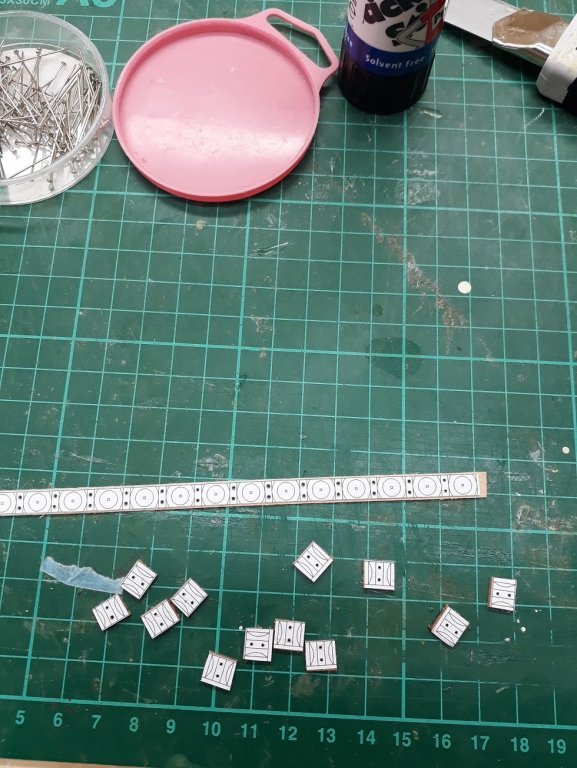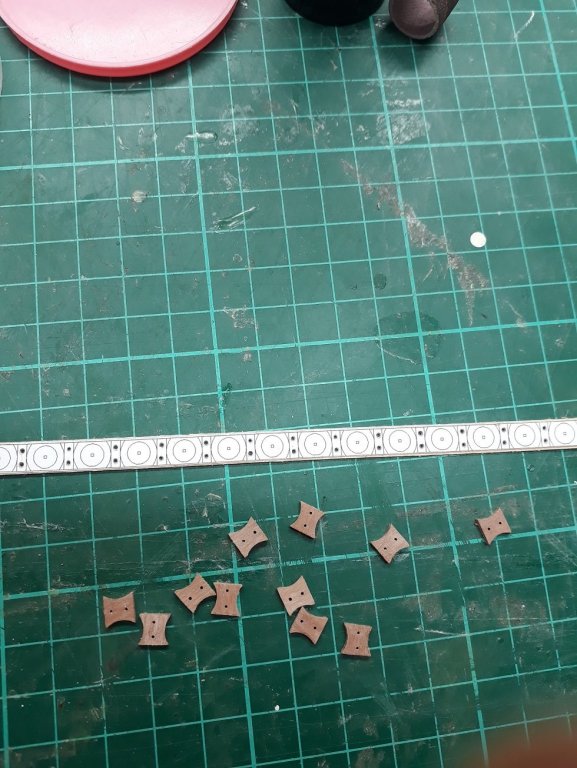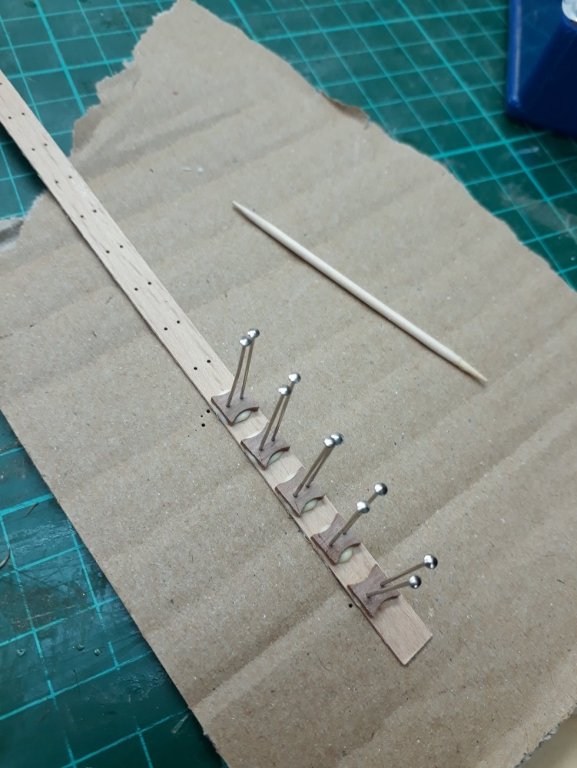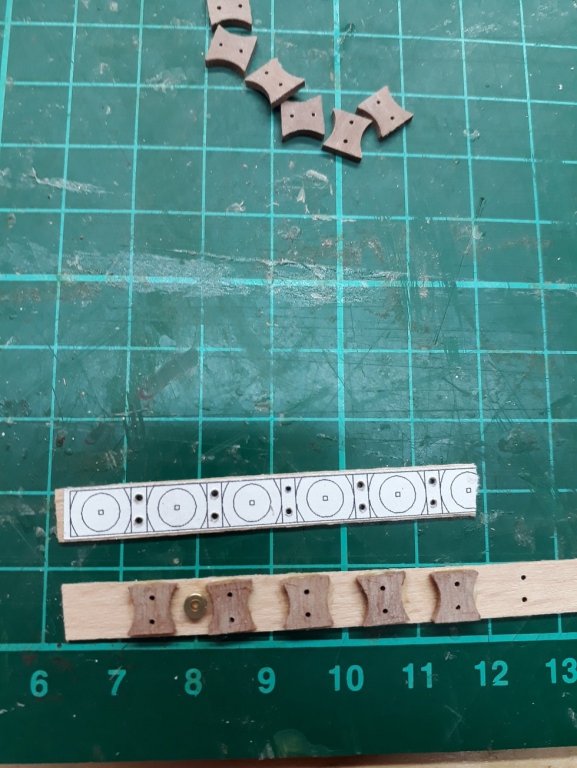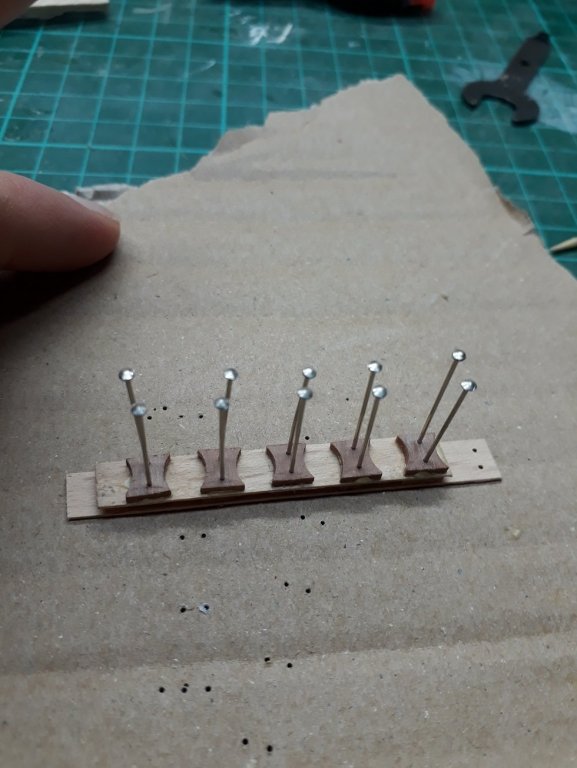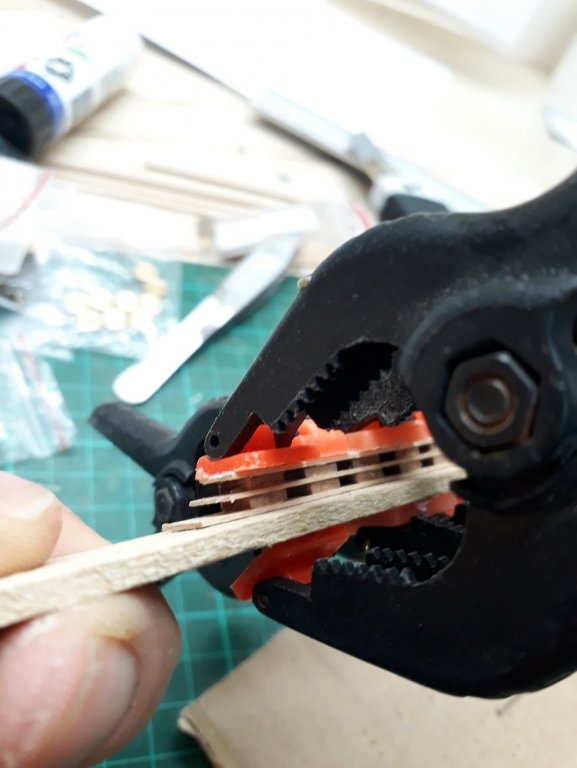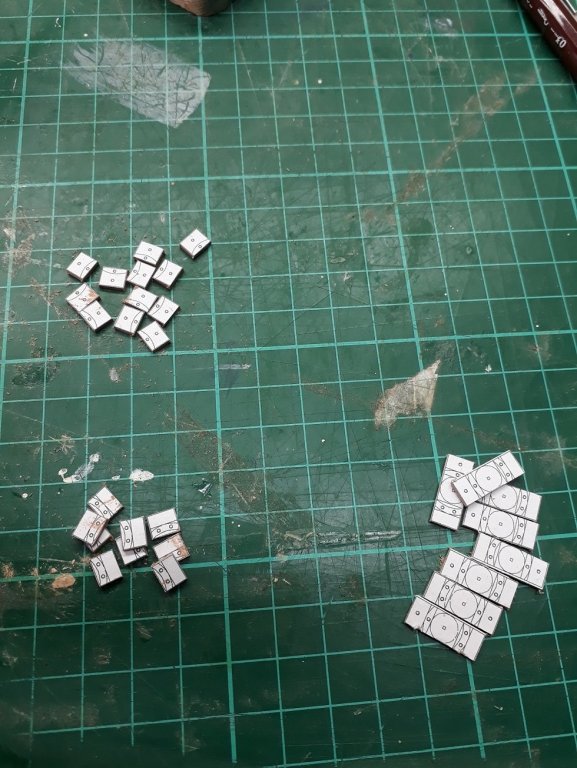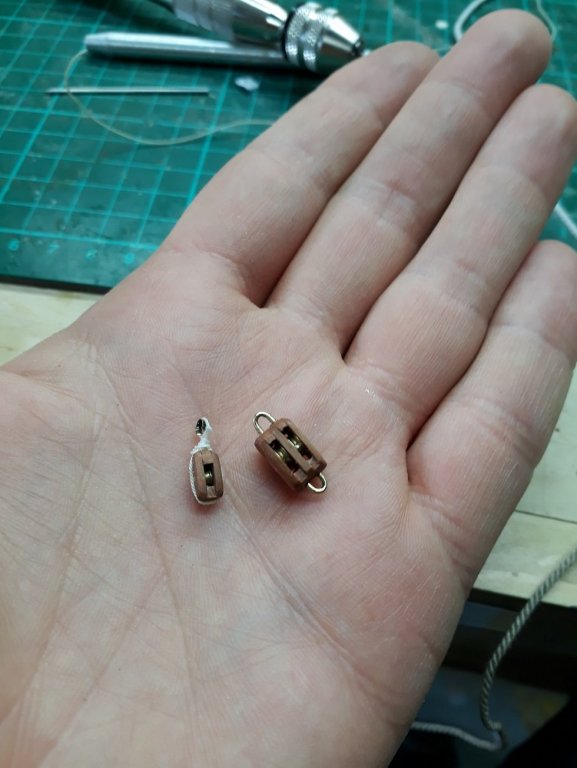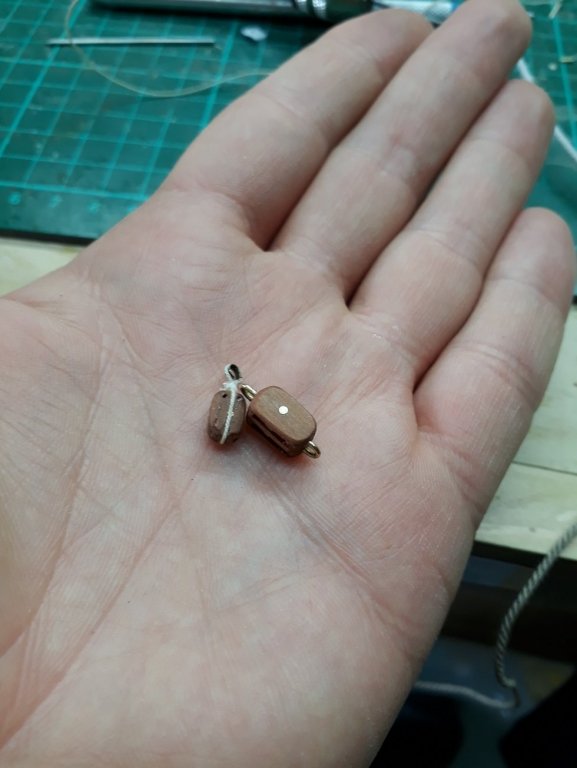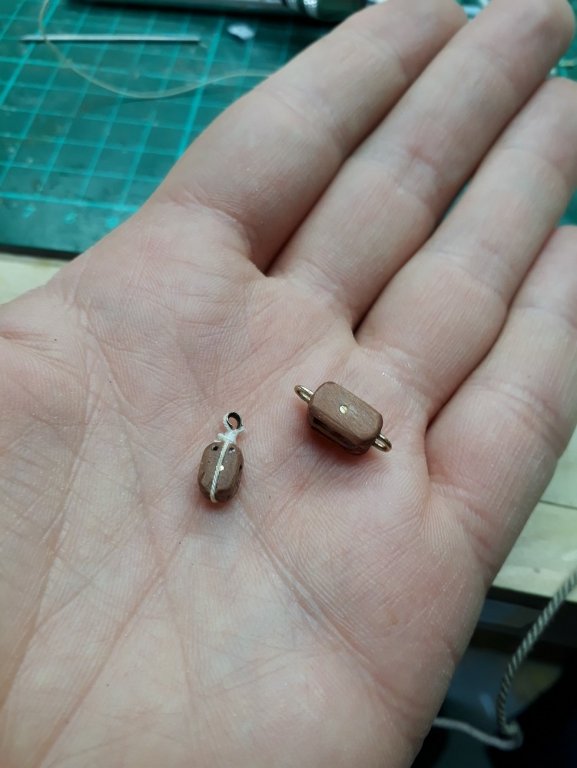-
Posts
1,600 -
Joined
-
Last visited
Content Type
Profiles
Forums
Gallery
Events
Everything posted by vaddoc
-
.thumb.jpg.6fd4c1b78768bb3efd745ab810936005.jpg)
Shop Fire Extinguisher
vaddoc replied to Roger Pellett's topic in Modeling tools and Workshop Equipment
Very grateful Kurt My extinguishers are indeed past the workbenches, next to the flammables, pretty far away from the door...will be fixed immediately. -
.thumb.jpg.6fd4c1b78768bb3efd745ab810936005.jpg)
Shop Fire Extinguisher
vaddoc replied to Roger Pellett's topic in Modeling tools and Workshop Equipment
On top of the above I also have 2 large cylinders of butane for the heater. My garage is packed full of wood, fuel, paper, oil etc all in close proximity with naked flame present often enough! I bought 2 extinguishers, a CO2 and a foam one and also a fire blanket. Apparently the extinguisher that does all is the one that throws microscopic water droplets but it was far too expensive. I think a realistic expectation is to be able to extinguish small fires and to feel better with this knowledge. For a big fire, a camera to capture the scene would be more useful. -
Power tools make modelling more accurate, maybe faster (as you start undertaking more tasks). They need space, solid work benches and some dust management system. (vacuum, filtration, masks). I also find my scroll saw, disc sander, and drill press the most useful, they are permanently plugged in and used constantly (scratch building). Dremel rotary tool also, but less. I built my own disc sander quite easily spending very little, 200 mm (8 inches) is I think the minimum, as you can only use half of it.
-
Thanks Bob I honestly do not think it is veneer. I bought from a well known high quality source and it is almost certainly sawn timber. At 2 mm thickness it is unlikely to be veneer and maple veneer is not really used very much. I think that either the tree had a hard childhood resulting in grain abnormalities or I stored it improperly. I ll thoroughly wet a sheet when I find the time and compress it, maybe it will flatten. I ll post the results
-
https://www.classicboat.co.uk/practical-advice/jib-traveller/ The inhaul is just a simple rope attached to the bowsprit traveller, no purchase/blocks needed. The wise books say it is not actually needed too much as the jib will push the traveller in, it is the outhaul that is more necessary. This is a subject a researched very recently. (for small boats only) Vaddoc
-
Another quick update! As family is away enjoying the summer, I found the opportunity to do a bit more work before I join them in a week's time. I attached the fittings for the bob and whisker stays using brass pins and CA glue. The thread is there just to show the lines, it will of course be replaced by ropes, blocks and shackles. Then the chainplates went on. I would like to somehow have a couple of brass belaying pins attached to the back of the gooseneck. I am not sure how this would work but in the meantime I silver soldered two simple belaying pins
-
.thumb.jpg.6fd4c1b78768bb3efd745ab810936005.jpg)
Which varnish??
vaddoc replied to Edwardkenway's topic in Painting, finishing and weathering products and techniques
Try the water based polyurethane Valejo, not as tough as the enamel Humbrol but much easier to use and overall does the job well. No brush marks at all, no special skills needed, just slap it on! Amazing self levelling properties -
.thumb.jpg.6fd4c1b78768bb3efd745ab810936005.jpg)
Which varnish??
vaddoc replied to Edwardkenway's topic in Painting, finishing and weathering products and techniques
Agree with Wefalck. Probably needs more thinning and more stirring but matt Humbrol is more difficult to apply than gloss and satin . Also do not go over the same area with the brush, trust the varnish. I think you need too thin much more -
Well, a bit of progress today despite a temperature of 38C. No need to convert to F, it is a lot! Firstly, I ordered replacement drills (plus a few extra). You can never have enough drills. Then, I worked on the boom and gooseneck. I could really use some micro tools for carving as it was tricky to sit the arms to the boom. The outcome was not as nice as I hoped but I can live with it. It moves extremely smoothly but still needs a bit more work.
-
Yes! Closing the case, they slipped out a bit and got caught. All broke in a fraction of a second!
-
Time I think for another post Life has been very busy and certainly not boring, in between massive storms ("supercell" storm), earthquakes, minor home flooding etc. I have been working on the boat but had no time to post and also managed to loose some photos. I have a new phone though so photo quality should now be better. I invested a lot of time and effort and perfected my block making method. I made lots of components and I will be making blocks of various sizes and configurations on demand. Then, I decided to clean my garage. And as soon as I finished, I decided to completely reconfigure it and clear all unneeded stuff. I ll post a photo later but it now looks much better. It did take 3 days though. I also decided to add (when I can afford it) more lights, about 10000 lumens on top of the existing ones, this should make things easier. Then, in a clean tidy garage, I started working on the gaff. It actually took a lot of work but I think came out fine. Still needs a few more components but the gaff jaws are ready. Both the saddle and the brass fitting pivot freely. Progress is very slow but the finish line is getting closer, can't really be more than a year or two away... In the mean time, could I get the prize for breaking the most drills in a single day?
-
Beautiful Patrick. Your fleet is wonderful. The last sailboat you made with the cutaway section looks so fragile I would hesitate to even breath near!
-
So elegant lines, a very large boat that looks as light as a ballet dancer. Very nice work Keith!
-
Excellent, I am joining in Patrick. How do you shape the hull, I presume there are no lines available. The superstructure may be visible in photos but not the hull which seem to have complex chines.
-
.thumb.jpg.6fd4c1b78768bb3efd745ab810936005.jpg)
Have a extra $100.00 to spend......
vaddoc replied to CPDDET's topic in Modeling tools and Workshop Equipment
So Dave, as you can see this $100 you had to spent could get you spending another $1000 for the bare absolute necessities of model building...😀 Just remember to fly under the admiral's radar... -
.thumb.jpg.6fd4c1b78768bb3efd745ab810936005.jpg)
Have a extra $100.00 to spend......
vaddoc replied to CPDDET's topic in Modeling tools and Workshop Equipment
Oh dear, I saw this too late! My personal very biased opinion, these money would be better spent on the small Proxon drill press. It might be bit more expensive but it is so useful it justifies the added cost. But for now enjoy the books! -
Thank you all! I continued to experiment with the blocks. Indeed, there is so little area for the CA glue to hold on to that I am concerned I ll have a lot of failures or that the sheaves will be glued by overspill. Also, I d like to avoid all this drilling and gluing. I ve spent many days considering this problem and tried a few things that did not work. In the end, I tried serving some copper wire and using this instead of rope. I think this is actually the solution. Twisting the served wire and then coating with CA is very secure and looks ok. In the next photos, the larger double block does not have Tung oil on (I forgot) but has a thimble that actually sat very nicely. For the smaller one, I should have made the twisted part shorter I think. They do run very smoothly. The thimble is slightly modified wire guardians, these come in two sizes (https://www.ebay.co.uk/itm/100-WIRE-GUARDIAN-5-COLOURS-CRIMPS-PROTECTORS-4-TIGER-TAIL-WIRE-JEWELLERY-UK/311961028467?hash=item48a2538773:m:mTVglS4r9SHT-NAqDLrcrAg&frcectupt=true) I used copper wire simply because that is what I had. I think being softer it might work better than brass though. I have made a few pieces using two diameter wires and I will strop the blocks as I go as some may need to have eyes in both ends. It is very quick and easy, much easier than using rope.
-
Thanks to all for your likes and comments I ve been too busy lately but I did manage to do some work on the boat. This time it was all about blocks! I will need many blocks, single and double, of various sizes. I have to find a way of mass producing them. Ordinarily, this would not be a big problem, but I want the blocks to be fully functional with brass sheaves. I spent quite a long time on the computer making CAD templates and came up with a very complex way. The next pics are from the first attempts. I realised that I could simplify things and that alignment could be maintained without any drilling. It still takes a long time to cut the little pieces, glue together, sand to shape, dill for the sheave and rings and finish with Tung oil. Still, it is now feasible and almost mass produced. These blocks need quite a lot of work but were done within 1 hour or so. I have templates for smaller and larger ones. One main issue is attaching rings to them but I think CA glue should be enough for a reasonably strong bond. I am also attaching the templates, maybe they ll be useful to some. Vaddoc block 7 x 5 with 3 mm sheave.pdf block 10 x 6 for 5 or 6 mm sheave.pdf blocks 12 x 8 for 8 mm sheave.pdf
-
.thumb.jpg.6fd4c1b78768bb3efd745ab810936005.jpg)
Mini (micro) drill bits in bulk, not sets.
vaddoc replied to moreplovac's topic in Modeling tools and Workshop Equipment
Ebay really. Sometimes Aliexpress. I go through a lot of drills, almost all from ebay. -
I used trade wood filler once, the equivalent of ronseal. It was a disaster, it was rock hard, impossible to sand, risked destroying the hull. I now use only Elmers which is ideal for modelling https://www.amazon.co.uk/Elmers-X-Acto-16oz-White-Multicoloured-9-65x9-65x10-79/dp/B00JKB2GP2?SubscriptionId=AKIAILSHYYTFIVPWUY6Q&tag=duc08-21&linkCode=xm2&camp=2025&creative=165953&creativeASIN=B00JKB2GP2 Many ways to skin a cat. Test on scrap wood, learn how the various products behave and see what works for you.
About us
Modelshipworld - Advancing Ship Modeling through Research
SSL Secured
Your security is important for us so this Website is SSL-Secured
NRG Mailing Address
Nautical Research Guild
237 South Lincoln Street
Westmont IL, 60559-1917
Model Ship World ® and the MSW logo are Registered Trademarks, and belong to the Nautical Research Guild (United States Patent and Trademark Office: No. 6,929,264 & No. 6,929,274, registered Dec. 20, 2022)
Helpful Links
About the NRG
If you enjoy building ship models that are historically accurate as well as beautiful, then The Nautical Research Guild (NRG) is just right for you.
The Guild is a non-profit educational organization whose mission is to “Advance Ship Modeling Through Research”. We provide support to our members in their efforts to raise the quality of their model ships.
The Nautical Research Guild has published our world-renowned quarterly magazine, The Nautical Research Journal, since 1955. The pages of the Journal are full of articles by accomplished ship modelers who show you how they create those exquisite details on their models, and by maritime historians who show you the correct details to build. The Journal is available in both print and digital editions. Go to the NRG web site (www.thenrg.org) to download a complimentary digital copy of the Journal. The NRG also publishes plan sets, books and compilations of back issues of the Journal and the former Ships in Scale and Model Ship Builder magazines.



